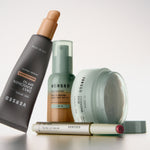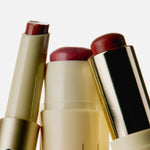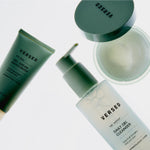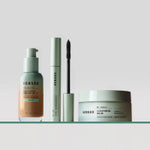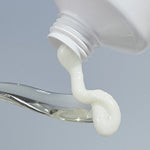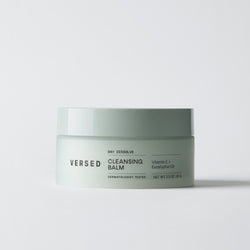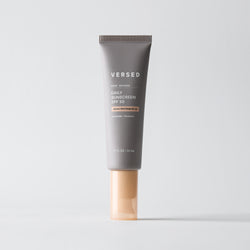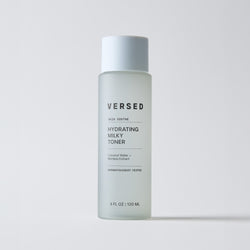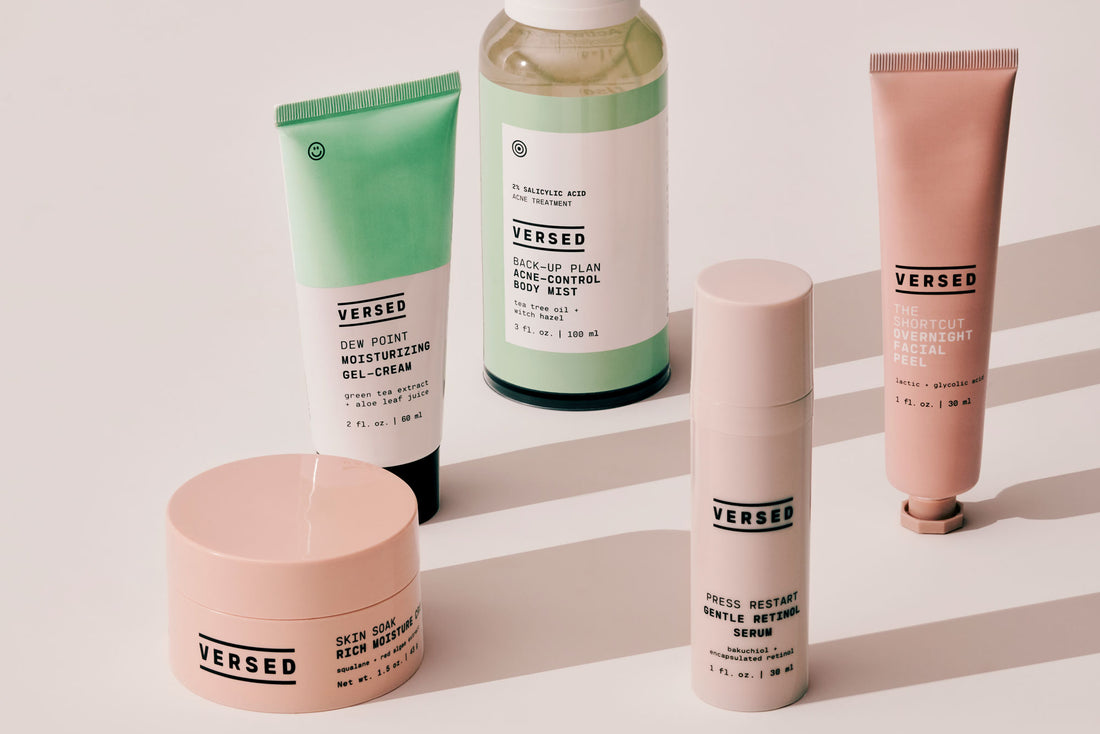Currently, only 14% of plastic containers in the US are recycled. Why? There are a few reasons.
Many don’t recycle or recycle their empties incorrectly (objects smaller than three inches can get caught in sorting machines, for example) because it’s confusing and there is no standardized set of rules. Some products, like those with sprayers and droppers, need to be disassembled first—a caveat that’s not often explained to consumers. Plus, recycling guidelines vary depending on where you live. There are seven types of plastics, but not every kind is accepted at every curbside recycling program. In fact, it’s unlikely more than one or two types are accepted through your municipal facility. And before you think glass is a better option, know that only 31% of those containers are currently recycled in the US, and, because glass is heavier, it requires more fossil fuels to manufacture than plastic.
Here at Versed, we understand and operate within the limitations of our reality. But that doesn’t mean we can’t take action.
Start by learning the different types of plastics (and their symbols) below. Then, check your area’s recycling guidelines to see which plastics are currently accepted near you. 
#1 PLASTIC
Name: Polyethylene terephthalate (PET or PETE)
Recyclability: Commonly recyclable
Examples: Soft drinks, disposable water bottles, and peanut butter jars
Polyethylene terephthalate (PET/PETE) is a type of polyester. It rose in popularity during the 1970s because it’s lightweight, inexpensive, and easily recyclable. Many bottles are made with PET—including some of our cleansers and serums.
#2 PLASTIC
Name: High-density polyethylene (HDPE)
Recyclability: Sometimes recyclable
Examples: Milk jugs, cleaning supplies, shampoo bottles
Versed Products: None
High-density polyethylene (HDPE) is a plastic made from petroleum. It’s categorized as a thermoplastic, meaning it can be melted and re-melted into new forms (in other words, it’s often recyclable). You’ll find HDPE in jugs and large bottles, such as milk, laundry detergent, shampoo, and bleach.
#3 PLASTIC
Name: Polyvinyl chloride (PVC)
Recyclability: Not often recyclable
Examples: Cling wrap, piping, tubes
Versed Products: None
PVC, which stands for polyvinyl chloride, is a hazardous type of plastic. During its lifecycle (from production to disposal), it releases toxic chemicals, like phthalates, into the atmosphere. Also, it’s not often accepted in curbside recycling programs. Cling wrap and construction materials are often made with PVC.
#4 PLASTIC
Name: Low-density polyethylene (LDPE)
Recyclability: Not often recyclable
Examples: Coffee cups, produce bags, and takeout containers
Versed Products: None
Low-density polyethylene (LDPE) is typically used in the coating of packaging (like on coffee cups), plastic bags, and container lids. #4 plastics are sometimes recyclable, so check locally.
#5 PLASTIC
Name: Polypropylene (PP)
Recyclability: Sometimes recyclable
Examples: Yogurt containers, cereal bags, straws
#5 plastics (PP) are highly resistant to heat, so you’ll often find this material in food containers like yogurt and soup. It’s also used for many of our jars, bottles, and tubes.
#6 PLASTIC
Name: Polystyrene (PS)
Recyclability: Rarely recyclable
Examples: Styrofoam containers and coffee cups
Versed Products: None
Polystyrene is more commonly recognized as styrofoam. This plastic takes a very long time (like 500 years) to break down and can release hazardous waste during its lifecycle. #6 plastic is often listed as a contaminant on recycling guidelines, but always check locally.
#7 PLASTIC
Name: Other/Polycarbonate (PC)
Recyclability: Rarely recyclable
Examples: Baby bottles, water cooler jugs, sippy cups
Plastics that don’t fall under the first six categories are known as “other”, or a #7 plastic. You may also see it referred to as PC (or polycarbonate), as that’s the most common type of #7 plastic, but there are numerous types that fall into this category. These are seldom accepted in curbside recycling programs and are sometimes made with BPA, a chemical that can have a negative impact on our health. Note: All Versed products made with #7 plastics are BPA-free.
*POST CONSUMER RECYCLED (PCR) PLASTIC
PCR plastic doesn’t have its own special number, but whenever possible, we use it in our packaging (our current lineup is over 50% PCR by weight). When an item is recycled, its materials are broken down and used to make new products. PCR packaging helps pull virgin plastic, which can take hundreds of years to degrade, out of the waste stream. Tip: Don’t assume a product is recyclable just because it’s made with PCR. Always check before tossing to avoid wishcycling.
Shop products made with PCR packaging below.
